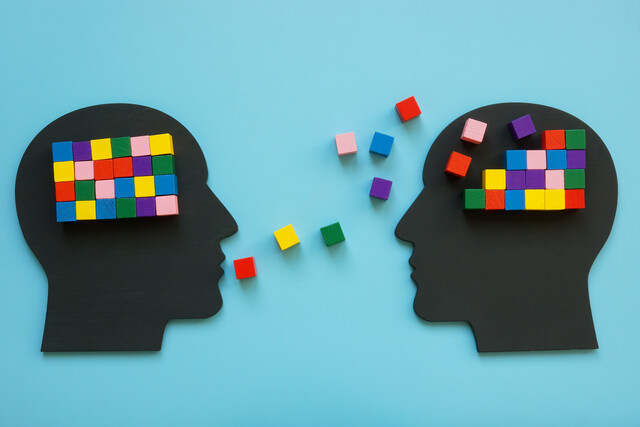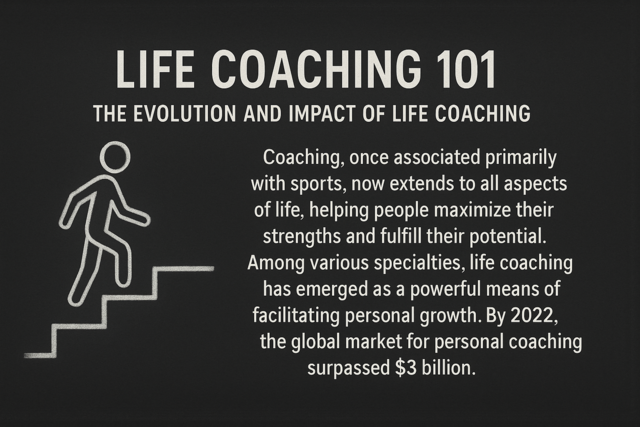We will learn what fiber is and what the benefits of fiber are to our health. We will review the differences between a healthy carbohydrate and a less healthy carbohydrate. We will also note some ideas on how to include healthy carbohydrates in our diet.
Be sure to review your own personal health and nutrition goals. This will keep you motivated to make positive changes. Your efforts to stay on track with improving your health will flourish. With each small, positive habit you embrace, things will fall into place.
You will find as you make more nutritious and healthy choices, other factors in your life improve as well. You will feel great and have more energy. Your mood may feel more joyful. You may even feel more confident. Keep up the good work!
Some of us may have heard that carbohydrates are bad, perhaps from fad diets. However, this isn't true. There are good carbohydrates and bad carbohydrates. Examples of bad carbohydrates are cookies, cakes, ice cream, soda, or foods that are highly processed, such as white rice and white bread. The "bad" carbohydrates can actually increase chances of heart disease, diabetes, and weight gain.
Good carbohydrates include whole grains, fruits, and vegetables. They give the body energy, fiber, vitamins, minerals, and important phytonutrients. Healthy carbohydrates also help organs function properly.
You may have heard that it's important to eat lots of fiber. But what is fiber? Fiber is found mainly in fruits, vegetables, whole grains, and legumes. Fiber can be called roughage or bulk, too. It's the part of foods that your body can't digest or absorb. Fiber goes through your digestion system basically unchanged.
There are two kinds of fiber: insoluble fiber and soluble fiber.
*Insoluble fiber is the fiber that does not dissolve in water. It increases the bulk in your stool. Insoluble fiber can be found in whole-wheat flour, wheat bran, nuts, and many vegetables.
*Soluble fiber is the fiber that does dissolve in water. This kind of fiber makes a gel-like material in your digestive tract. Soluble fiber can be found in oats, peas, beans, apples, citrus fruits, carrots, and barley.
To attain the most benefit of fiber in your diet, try to eat a variety of high-fiber foods.
Section 4: Benefits of Fiber
You may be wondering - If your body doesn't digest fiber, what's so great about fiber? Actually, there are several health benefits to eating foods high in fiber.
- Prevents constipation
- Helps prevent digestion disorders
A diet high in healthy fiber can help prevent conditions such as diverticulosis, diverticulitis, hemorrhoids, irritable bowel syndrome, and polyps. Eating high-fiber foods is also considered by many health experts to be significant in the prevention of colon cancer. There are different reasons why the prevention of these conditions occurs with a high fiber diet, but some research has shown an increase in these conditions with the addition of white processed flour into the American diet.
- Lowers cholesterol levels
Eating foods high in fiber has been found to improve heart health. This happens by lowering the "bad" LDL cholesterol, and also by elevating the "good" HDL cholesterol. Fiber will attach itself to bile (which has cholesterol) and also dietary cholesterol, so that the body will get rid of cholesterol.
We will discuss cholesterol more when we cover proteins.
- Keeps blood sugar at healthy levels
Everyone can benefit from keeping their blood sugar levels at healthy levels. If you have Type 2 diabetes, eating a high-fiber diet is a great way to keep it under control. Also, a diet high in fiber is said to help prevent developing Type 2 diabetes.
Keeping our blood sugar at healthy levels can keep our energy where we want it to be. Also, we can keep our mood less irritable. We will also be less anxious and even less depressed!
Blood sugar is the main fuel for our body and helps our body carry out its many activities. If our blood sugar falls too low, we might even become dizzy, tired, headachy and irritable. This condition is called hypoglycemia.
- Helps in weight loss
If you are trying to maintain or lose weight, high-fiber foods are the way to go! This is because high fiber foods make us chew our food longer, which gives the body more time to decide when it's actually no longer hungry. Also, eating high-fiber foods help us feel full longer and tend to have fewer calories.
If you are trying to gain weight, of course, foods high in fiber still have the other health benefits that we discussed.
Section 5: Incorporating Fiber in Our Diet
People have different preferences for which high-fiber foods to incorporate into their diet. Try to find some healthy high-fiber foods that you enjoy.
More and more people are finding that they are allergic to whole wheat, or even gluten. If such is the case with you, of course avoid your food allergy and stick with foods that cater to your lifestyle. Talk with a doctor who is familiar with food allergies, or a nutritionist if you need help finding high fiber foods and you have an allergy.
- Here are some tips to adding high-fiber foods to your diet:
*Add high-fiber foods to your grocery list. This will make it easier to buy and eat nutritious high-fiber foods.
*Be careful about food labels. Pick foods that have labels that say "whole wheat," "whole oats," "whole rye," or something similar. If the label says, "made with wheat flour, it is unclear if the food has been over-processed.
- Servings of Carbohydrates
Carbohydrates should be about 45 to 55 percent of our diet, or about 225 g to 325 g for someone with a 2000 calorie diet. One carbohydrate serving is equal to about 15 g. That means a person with a 2000 calorie diet can eat 16 servings of carbohydrates each day. A serving could be a slice of bread, � cup dry, unsweetened cereal, � cup pasta, 1/3 bagel, 1 medium sugar cookie, 1/3 cup rice, � cup beans, 1/3 cup hummus, or one piece of fruit.
Conclusion
In this article, you learned the difference between a good carbohydrate and a bad carbohydrate. You learned what fiber is and how fiber is beneficial for our health. And you read some tips to include more fiber in your diet.
You are on your way to including foods in your diet that are right for you and your lifestyle. You are on the path to a healthier and more energetic you. Keep at it!
In this exercise, write down what you eat for at least three days. Try to include a weekend day. Doing this exercise for a week is even better if you have time. This will allow you to see exactly what you are eating, what you snack on, etc. If you can, try to estimate how much of each food you eat, too. Sometimes we find we need to increase or decrease the amount of something we eat.
After doing this exercise, review your goals and the health changes you would like to make. Think positively about working on your goals. Don't be hard on yourself. This exercise is simply to see what eating habits you have. Every day work towards your goals and give yourself a pat on the back for your efforts!
Section 1: Introduction
You will learn how you can include the protein you need in your diet in healthy ways. There are some health benefits from eating protein, so you do need protein in your diet. However, it's important to choose healthy protein options so that your protein does not come with added health risks.
We will discuss the benefits of eating protein, and why it's essential to balanced nutrition. We will also review how much protein we need to eat and the healthiest options. Also, we will summarize a few health concerns related to protein, including cholesterol, anemia, and fad diets that are high in protein.
Section 2: Benefits of Protein
Why do we need protein? Every cell in your body needs protein. Your hair and nails are made up of protein. You need protein to build and repair tissues in your body. You need protein to carry oxygen in your blood. Your muscles, bones, cartilage and skin use protein. You also need protein to make hormones and enzymes. As you can imagine, protein is pretty important. Protein is the building blocks for our body. Take away water and the rest of your body is about 75% protein. And our body doesn't really store protein for later use.
We still need to be careful what kind of proteins we put into our body. Proteins high in fat and cholesterol can cause certain health concerns. Not choosing healthy protein options has been connected to health problems such as heart disease, stroke, obesity, diabetes in children, and cancer. On the other hand, people who don't eat enough of the right proteins can become anemic and lethargic.
- Servings of Protein
How much protein do we need? It depends on your age, gender, and how active you are. Some general guidelines: Teenage boys and active men need three servings of protein for a total of 7 ounces of proteinper day. Children, ages 2 to 6, and most women, need two daily servings for a total of 5 ounces of daily protein. Older children, teenage girls, active women, and most men need two servings, for a total of 6 ounces of protein per day.
- Protein Sources
Protein that has all the amino acids you need are called complete proteins. If the protein source is missing one or more amino acids that your body needs, then it's called an incomplete protein. Meats tend to be complete proteins, while other protein sources -- such as fruits, vegetables, grains, and, nuts -- tend to be incomplete proteins.
Both meat and nonmeat proteins seem to have the same protein nutrition for the body. However, we have to look at the whole protein package when selecting meats. If your meat comes with a lot of saturated fat, then this could be bad for your health.
3. Selecting Healthy Proteins
It's best to select foods that will give you the benefit of eating protein, while not adding too much saturated fat to your meal. Choose lean-cut meats, fish, and chicken (without the skin or fat). Nuts, beans, and whole grains can be healthy protein sources, as well.
Here are some tips to choosing healthy protein sources:
*Eat a variety of foods that contain protein. Consider beans, nuts, and legumes. They are great sources of protein, offer important nutrients, and they contain less fat than meat sources.
*If you enjoy milk products, choose low-fat or skim milk products.
*When you buy ground meat, check the label for what percentage of fat it contains. The meat should be less than 15 percent fat. If the label says "choice" or "select," then the meat probably has less fat. If the label says "prime," then the meat probably has more fat.
*Cut off any visible fat from poultry or meat.
*Eat fish high in omega-3 fatty acids at least twice a week. Try salmon, herring, sardines, tuna, or mackerel. These are the fatty fish, and they are good for you. Fish has less saturated fat (the bad fat) than meat.
*Try lean cuts of emu, buffalo, and ostrich. They are low in saturated fat, sodium, and cholesterol.
*Shrimp and shellfish have more cholesterol than most fish, but contain less saturated fat than most meat choices.
- Cholesterol
You can lower your cholesterol and risk for heart disease by getting enough exercise, maintaining a healthy weight, limiting your saturated fat and transfats, eating enough fiber, and eating healthy foods, such as fish that have omega-3 fatty acids.
So what is cholesterol? Cholesterol is a fat-like, waxy substance in your blood. It's needed for making hormones, cell membranes (the outer part of cells), and other activities in the body. However, too much cholesterol in the body can cause problems, like heart disease and stroke.
There is a "good" cholesterol and a "bad" cholesterol. LDL is the "bad" cholesterol. It can travel in your blood stream, and form deposits in your arteries. These deposits make your arteries less flexible and leave less room for blood to flow through. If too much LDL builds up in an artery, it can plug up your artery. This is known as a "clot". Clots are dangerous, because they can cause a heart attack or stroke.
HDL is the "good" cholesterol. HDL is thought to help prevent heart disease and stroke, by removing the build up of the "bad" cholesterol in the arteries. High levels of HDL seem to help protect us from heart disease, whereas low levels of HDL seem to increase our chances of having heart disease.
- Anemia
Anemia is a condition where the blood doesn't have enough hemoglobin. A person can get iron-deficiency anemia from not eating enough iron-rich foods. This is a common health condition that can be confirmed by a blood test at the doctor's office. Iron is in foods such as meat, oysters, and sardines.
Iron-deficiency can cause fatigue, headaches, irritability, weakness, a pale complexion, and other difficulties. If you have these symptoms, then you need to see your doctor to make sure you are not anemic.
- High Protein Fad Diets
There are some fad diets out there that claim the best way to lose weight is to eat a high-protein, low-carbohydrate diet. This is a dangerous myth. There are at least two reasons for not following this fad:
#1 - If you eat a diet very high in protein, and too low in carbohydrates, you can poison your system. You might even find that your urine has a bad smell. Your body will go through a process called ketosis. Eventually, the body will start producing ammonia that accumulates in your body.
#2 - People who eat a high protein diet will start excreting calcium in their urine. The body will start breaking down stores of calcium and lose them through urine. This can lead to osteoporosis.
If you are not eating carbohydrates, you are avoiding nutritious foods, such as fruit and vegetables. Then you are missing out on vitamins, fiber, and antioxidants.
The best way to lose weight is to develop healthy eating and exercise habits.
Conclusion
In this article, you learned some benefits to eating protein. We discussed how to choose some healthy ways to include protein in our diet. Now you can choose healthy proteins and know how much protein you need.
Protein that comes with saturated fat can cause health problems, such as heart disease and stroke. It's important to choose healthy sources of protein, so we don't add health risks to our system. On the other hand, we need to make sure we eat enough protein, so that we don't become fatigued.
An effective way to lose weight is to gain healthy eating and exercise habits.
Keep up the great job you are doing staying focusing on your goals. You are on your way to developing healthy habits that will stay with you for a long time. These habits will keep you healthy and feeling great.






























